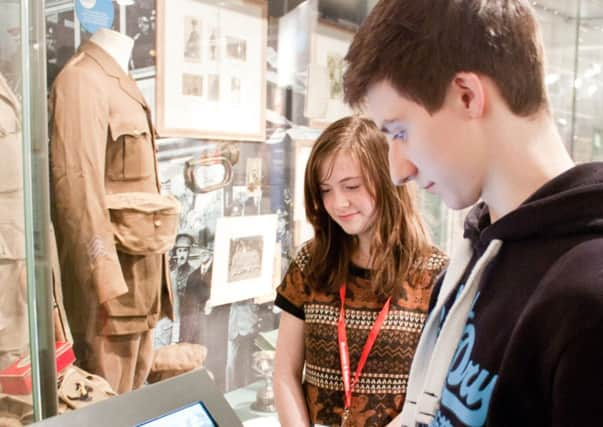Archives opened to young people in Great War project


PICKING up and holding a cigarette case which saved the life of a Yorkshire soldier is a special moment for any student of the First World War.
Edward Spetch was a Leeds postman who served in France and in 1917 was hit by a bullet which would have killed him but for his fondness for smoking.
Advertisement
Hide AdAdvertisement
Hide AdHis cigarette case in his breast pocket absorbed the impact of the bullet and he survived.
The smashed case is among a collection of personal objects, including his prayer book and photos, held by Leeds Museums and Galleries which has opened up its vast archive to its youth panel, The Preservative Party, whose members have a passion for history and museums.
The panel’s members, whose ages range from 13 to mid-20s, are a mix of school pupils, some of them GCSE and A-level history students, undergraduates and graduates.
Steph Webb, of Skipton, a Leeds University graduate, has helped co-ordinate the work of the panel, which has used Facebook and Twitter to bring to life the story of the war and its impact on communities in Leeds.
Advertisement
Hide AdAdvertisement
Hide AdShe says panel members have learned a great deal about how the war affected ordinary people, not just service personnel.
“Before I started the project I didn’t know that much about the Home Front or what happened at the Barnbow munitions factory in Leeds.
“I didn’t realise the extent of the place or the cover-up that happened after the explosion.”
Panel members have also learned more about how the city welcomed Belgian refugees in the first months of the war.
Advertisement
Hide AdAdvertisement
Hide AdOn a special Facebook timeline – WW1Leeds – the youth panel notes that on December 5 1916: “35 female munitions workers die in a massive explosion at Barnbow. The incident is covered up and hardly anyone finds out about it.”
The following year, six women died from poisoning at the factory.
The forum began the timeline in 1894 so they could follow the progress of George Sanders, a Leeds soldier with the West Yorkshire Regiment who was born in Lower Wortley that year.
Sanders became a captain and won the Victoria Cross and Military Cross before becoming a prisoner of war.
Advertisement
Hide AdAdvertisement
Hide AdHe was educated at Little Holbeck School and was an apprentice fitter at the Airedale Foundry. Sanders earned his VC on the first day of the battle of the Somme by organising and leading 30 men while cut off for 36 hours, without food and water.
“We tried to follow people’s personal stories,” says Ms Webb, who has just completed a masters degree in museum studies.
“On the timeline we have the story of Edward Spetch as a lot of his belongings are in the Leeds collection. He was a very similar age to some of our forum members, which made his story more powerful and poignant.”
Forum members worked with Leeds museum staff and academics at Leeds University for their Legacies of War project on the Great War.
Advertisement
Hide AdAdvertisement
Hide AdMembers of the Leeds public also contributed their own stories and photographs to the Facebook page.
“We are really pleased with the response to our Facebook timeline,” says Ms Webb. “We wanted to use social media to get a new audience. It is a good way of reaching more people. Young people are easier to reach on social media.
“The personal stories and artefacts made it seem more real. It’s more powerful to read about people just like you.”
• Pictures and stories for inclusion on the timeline can be sent to [email protected] or uploaded to www.facebook.com/WW1Leeds
Get in touch via Twitter @PresParty with the hashtag #WW1Leeds. The group’s email address is: [email protected]